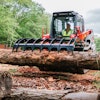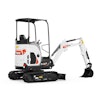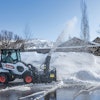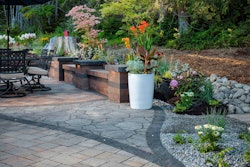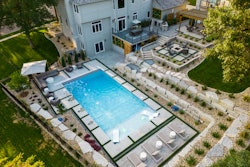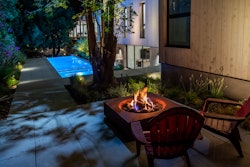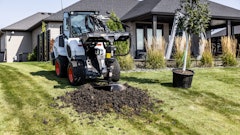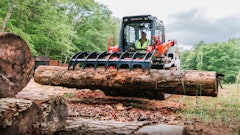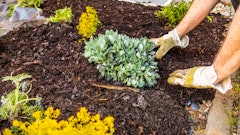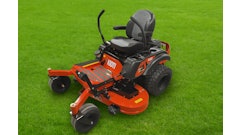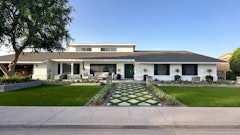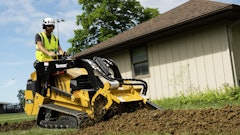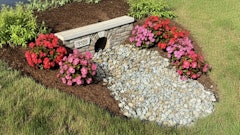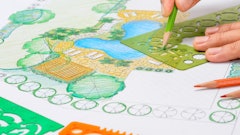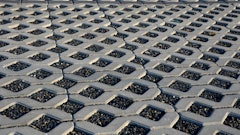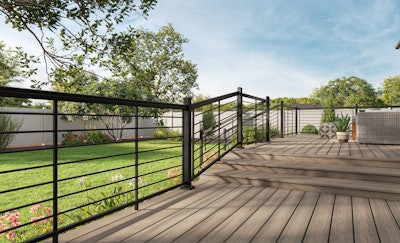
As outdoor spaces continue to be a priority for many homeowners, decking is one of the most popular extensions of a home. Innovation has excelled in the outdoor industry market. Now more than ever, homeowners have a range of materials, designs and colors to choose from to match their home’s aesthetics.
Gone are the days of flat, minimalist decking boards. Today’s designs embrace textures, clean lines and craftsmanship-like details that transform decks into an inviting space. The appreciation of finer, detailed outdoor spaces reflects a broader shift toward thoughtful, curated designs that resonate with a variety of styles, from traditional to contemporary.
Simplicity and a “less is more” approach are at the forefront of design, as homeowners prefer similar color palettes and materials and less embellishments or ornamentation. Pattern, color, shape and texture are all redefined as people look to elevate their outdoor spaces to mirror the sophistication of their home interiors.
The trend of biophilic design practices will continue in 2025 through the integration of curved and fluid shapes into decking layouts, reflecting its growing influence. Rounded edges and dynamic patterns help decks merge naturally with their surroundings, creating a sense of flow and connection to nature. These forms not only enhance the aesthetic appeal of a deck, but also improve functionality by making the space more accommodating for varied uses.
Designers are also looking beyond the typical trademarks of biophilia to find new ways to balance and harmonize outdoor living spaces and products such as decking, hardscapes and decorative accents. New options allow designers to seamlessly blend deck and hardscapes. Color choice and design can make all the difference in the cohesive connection between decking and its environment, making the space feel more inviting and serene.
Materials matter more than ever. Decking brands now offer premium finishes, like composite or PVC blends that create warmth and depth, similar to the effects of real wood. Homeowners no longer have to sacrifice style over deck features like slip resistance, durability or cooling technology. Innovations in enhanced composite decking offer all of these advances, delivering the look of natural wood textures and finishes while providing superior performance that requires minimal maintenance. These materials balance durability with high-end aesthetics, meeting the growing demand for outdoor spaces that are just as sophisticated as indoor spaces.
Decking is evolving into a platform for creative design as well. Homeowners are opting for unique patterns, contrasting colors and personalized features that make their outdoor living spaces a true extension of their home. Design decisions are curated and thought through, whether it’s intricate inlays, multilevel structures or dramatic lighting, but key fundamental design elements will never fade. Think about designing with harmony and remember balance is key. As a contractor, utilize the home’s interior as a tool for inspiration to create harmony between the deck and home flooring.
Decking color palettes also have a heavy influence on décor, ambiance and the overall look of the outdoor space. Color schemes are moving away from the cool grays that dominated in previous years, leaning instead into warm neutrals and earthy tones as they pair better with these emerging accent tones. Of course, light grays and black tones will continue to be a popular choice, but colors like sand brown, warm blonde, oak cherry and walnut add both drama and depth while remaining muted enough to still be applied as a neutral. These color tones come off as softer, more natural and offer a more sophisticated alternative. Leading trends suggest that homeowner color preferences are becoming livelier, impacting the use of gray and how they choose their decking and accent options.
While decking design trends are transforming outdoor spaces, railing options are also undergoing a revolution. Aluminum railing, in particular, is gaining popularity for its sleek, modern aesthetic and unmatched durability. This trend is especially prevalent in regions like the Midwest and Pacific Northwest, where homeowners have long prioritized rust-resistant and low-maintenance solutions. Now, aluminum railing is making waves in the Mid-Atlantic and Southeast, where timeless black accents are becoming increasingly desirable. Black can also offer more of a contrast, helping highlight other tones or home features.
Unlike traditional steel options, aluminum railing is resistant to rust and can withstand harsh weather conditions. This durability reduces the need for frequent maintenance or replacement, making it an ideal choice for homeowners looking to invest in long-lasting solutions. As the demand for resilient outdoor features grows, aluminum railing remains a reliable option for homes in all climates.
Design and manufacturing innovations in the decking and railing space have produced high-quality materials that present significant opportunities for contractors and designers. As homeowners continue to invest in their outdoor spaces, there is a rising demand for expertise in creating functional and elevated designs. By staying ahead of these trends, professionals can position themselves as leaders in the market, offering innovative solutions that meet the evolving needs of their clients.
